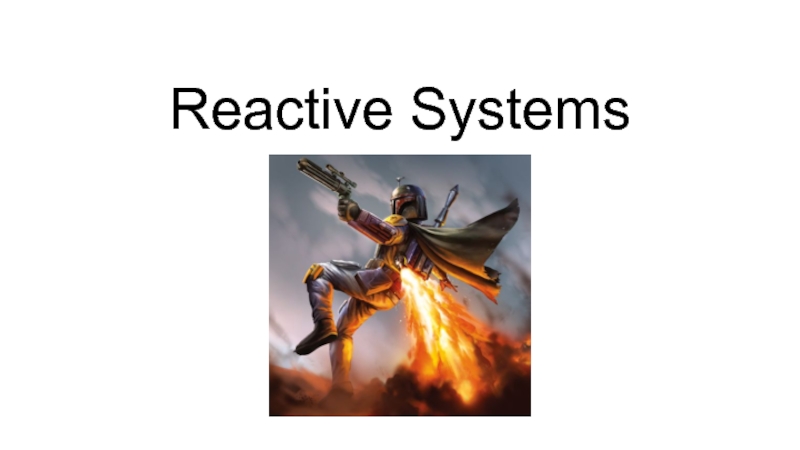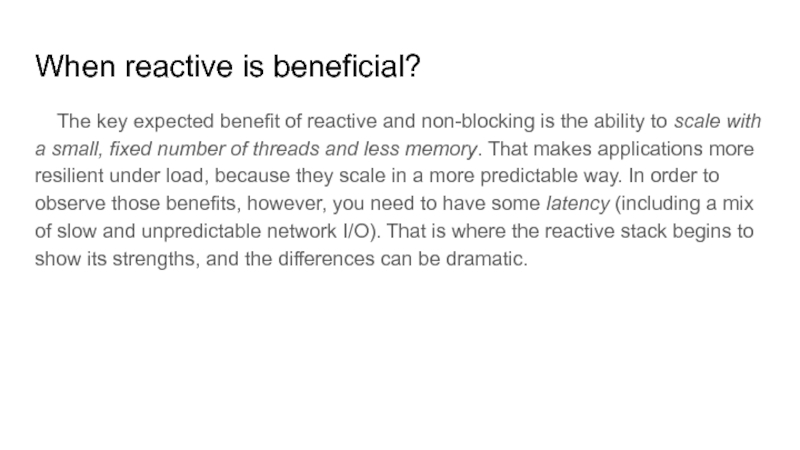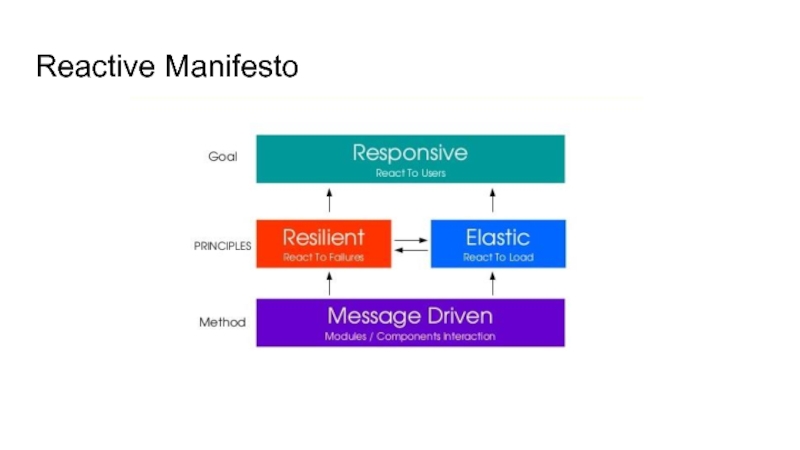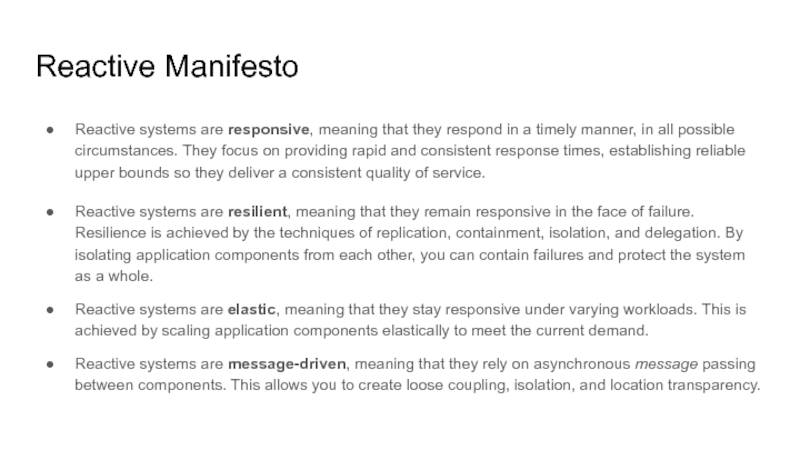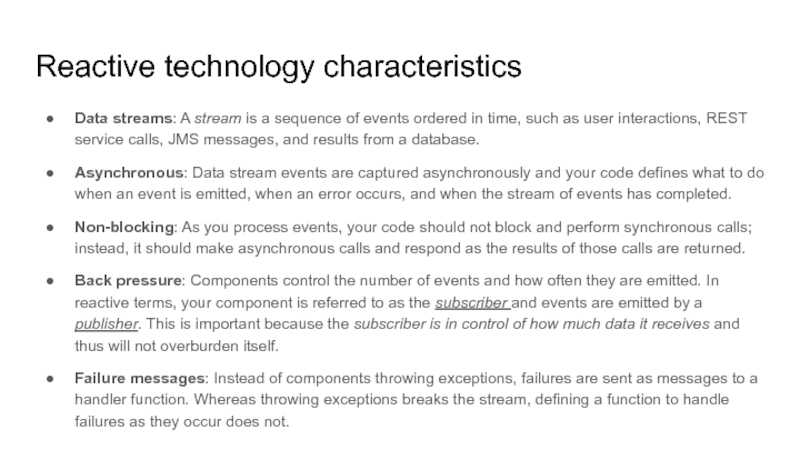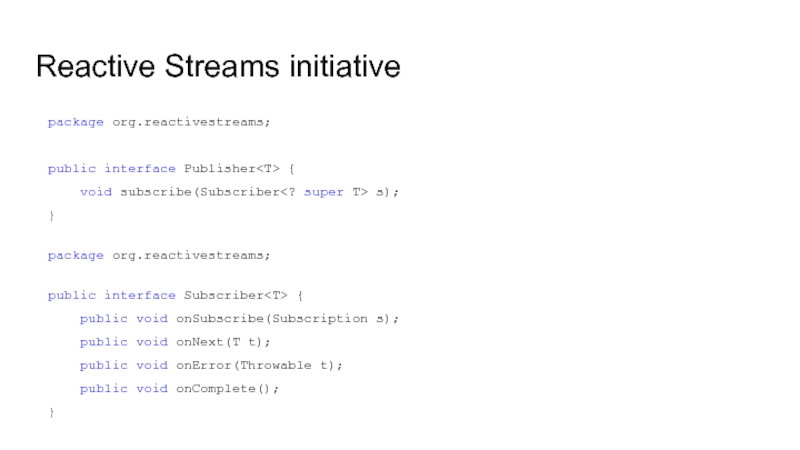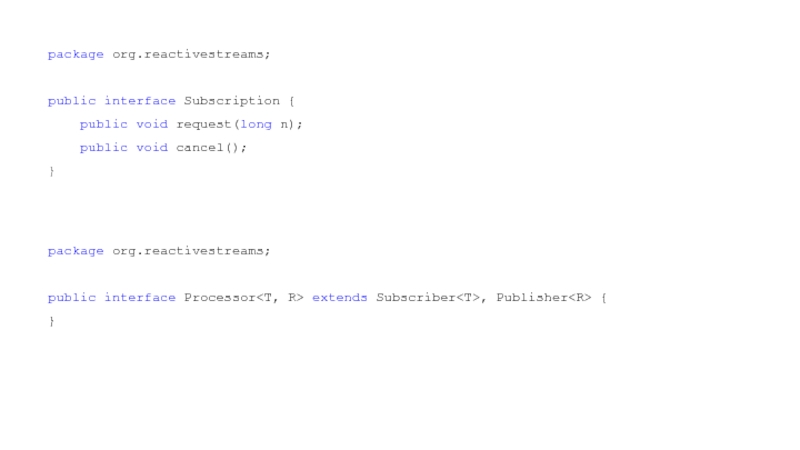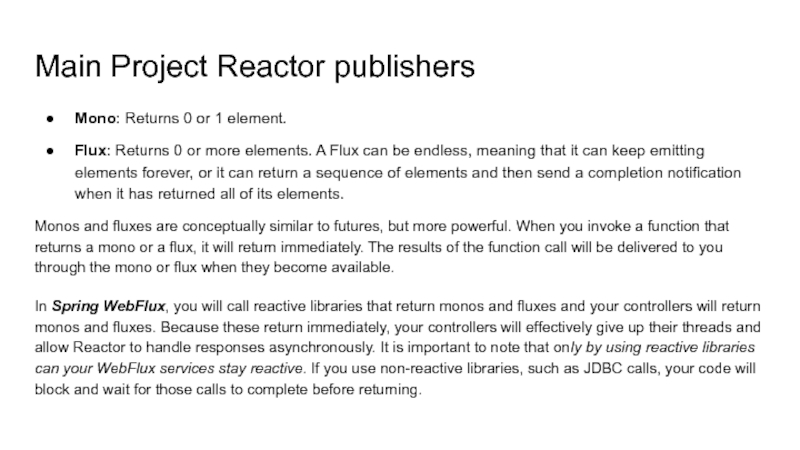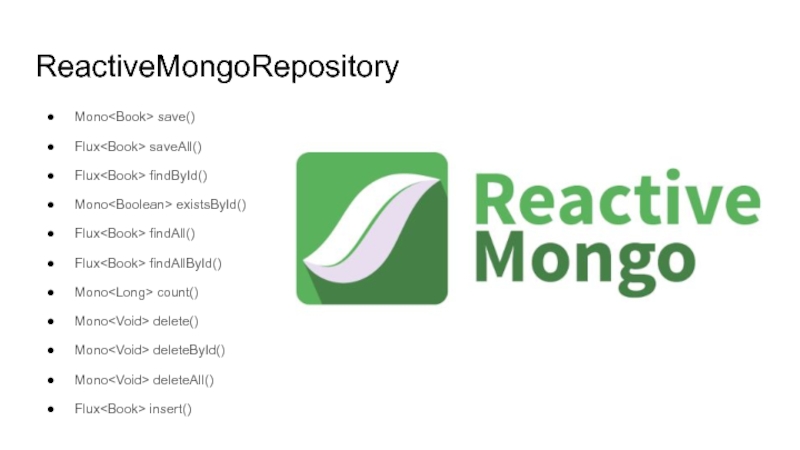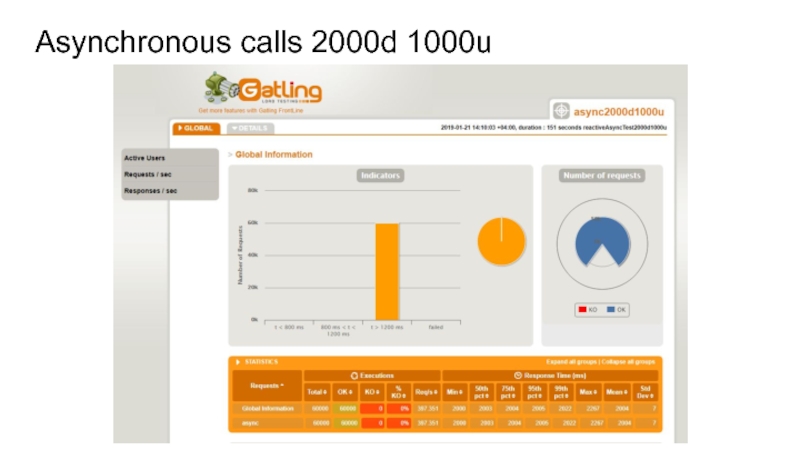Разделы презентаций
- Разное
- Английский язык
- Астрономия
- Алгебра
- Биология
- География
- Геометрия
- Детские презентации
- Информатика
- История
- Литература
- Математика
- Медицина
- Менеджмент
- Музыка
- МХК
- Немецкий язык
- ОБЖ
- Обществознание
- Окружающий мир
- Педагогика
- Русский язык
- Технология
- Физика
- Философия
- Химия
- Шаблоны, картинки для презентаций
- Экология
- Экономика
- Юриспруденция
Reactive Systems
Содержание
- 1. Reactive Systems
- 2. Reactive vs Blocking
- 3. When reactive is beneficial? The key
- 4. Reactive Manifesto
- 5. Reactive ManifestoReactive systems are responsive, meaning that
- 6. Reactive technology characteristicsData streams: A stream is
- 7. Reactive Streams initiativepackage org.reactivestreams; public interface Publisher { void subscribe(Subscriber
- 8. package org.reactivestreams; public interface Subscription {
- 9. Project Reactor & Spring WebFlux
- 10. Main Project Reactor publishersMono: Returns 0 or
- 11. Время кодить!
- 12. ReactiveMongoRepositoryMono save()Flux saveAll()Flux findById()Mono existsById()Flux findAll()Flux findAllById()Mono count()Mono delete()Mono deleteById()Mono deleteAll()Flux insert()
- 13. Pure statistics
- 14. Synchronous calls 2000d 1000u
- 15. Asynchronous calls 2000d 1000u
- 16. Further readingSpring Web Reactive:https://docs.spring.io/spring/docs/current/spring-framework-reference/web-reactive.htmlhttps://docs.spring.io/spring/docs/5.0.0.M4/spring-framework-reference/html/web-reactive.htmlDetailed Spring WebFlux example:https://developer.okta.com/blog/2018/09/24/reactive-apis-with-spring-webfluxSpring Security 5 for Reactive applications:https://www.baeldung.com/spring-security-5-reactive
- 17. Скачать презентанцию
Reactive vs Blocking
Слайды и текст этой презентации
Слайд 5Reactive Manifesto
Reactive systems are responsive, meaning that they respond in
a timely manner, in all possible circumstances. They focus on
providing rapid and consistent response times, establishing reliable upper bounds so they deliver a consistent quality of service.Reactive systems are resilient, meaning that they remain responsive in the face of failure. Resilience is achieved by the techniques of replication, containment, isolation, and delegation. By isolating application components from each other, you can contain failures and protect the system as a whole.
Reactive systems are elastic, meaning that they stay responsive under varying workloads. This is achieved by scaling application components elastically to meet the current demand.
Reactive systems are message-driven, meaning that they rely on asynchronous message passing between components. This allows you to create loose coupling, isolation, and location transparency.
Слайд 6Reactive technology characteristics
Data streams: A stream is a sequence of
events ordered in time, such as user interactions, REST service
calls, JMS messages, and results from a database.Asynchronous: Data stream events are captured asynchronously and your code defines what to do when an event is emitted, when an error occurs, and when the stream of events has completed.
Non-blocking: As you process events, your code should not block and perform synchronous calls; instead, it should make asynchronous calls and respond as the results of those calls are returned.
Back pressure: Components control the number of events and how often they are emitted. In reactive terms, your component is referred to as the subscriber and events are emitted by a publisher. This is important because the subscriber is in control of how much data it receives and thus will not overburden itself.
Failure messages: Instead of components throwing exceptions, failures are sent as messages to a handler function. Whereas throwing exceptions breaks the stream, defining a function to handle failures as they occur does not.
Слайд 7Reactive Streams initiative
package org.reactivestreams;
public interface Publisher {
void subscribe(Subscriber
super T> s);
}
package org.reactivestreams;
public interface Subscriber {
public void
onSubscribe(Subscription s);
public void onNext(T t);
public void onError(Throwable t);
public void onComplete();
}Слайд 8package org.reactivestreams; public interface Subscription { public void request(long n);
public void cancel();
}
package org.reactivestreams;
public interface Processor extends Subscriber,
PublisherСлайд 10Main Project Reactor publishers
Mono: Returns 0 or 1 element.
Flux: Returns
0 or more elements. A Flux can be endless, meaning
that it can keep emitting elements forever, or it can return a sequence of elements and then send a completion notification when it has returned all of its elements.Monos and fluxes are conceptually similar to futures, but more powerful. When you invoke a function that returns a mono or a flux, it will return immediately. The results of the function call will be delivered to you through the mono or flux when they become available.
In Spring WebFlux, you will call reactive libraries that return monos and fluxes and your controllers will return monos and fluxes. Because these return immediately, your controllers will effectively give up their threads and allow Reactor to handle responses asynchronously. It is important to note that only by using reactive libraries can your WebFlux services stay reactive. If you use non-reactive libraries, such as JDBC calls, your code will block and wait for those calls to complete before returning.
